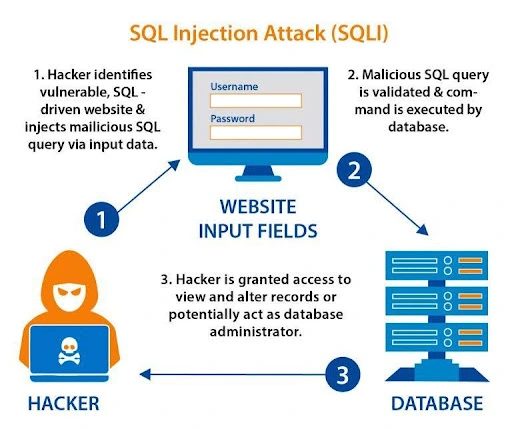Highlights
- Web SQL is an interface for client-side databases used to store and manage data for web pages.
Oracle SQL developer Web is an administration and development tool for databases that is browser-based. - Data cleaning guarantees data accuracy, also, problems like missing values and improper formatting are fixed.
- Oracle warehouse builder provides clean, rule-compliant data by automating mapping and schema modifications.
- Safe queries, data backups, and development environment testing are some precautions to take.
- SQL injection protection prevents assaults and uses a Web Application Firewall (WAF) and parameterized queries.
The question of whether or not it is safe to clean the web SQL data Oracle depends on many things. That’s why to better understand the key concepts, let’s start from the base.
What is Web SQL?
It is a web page used for data management and storage. The interface can be supported by Google Chrome, Opera, and Android browsers. This SQL interface is not a part of HTML5 specifications. However, it addresses various interfaces to manipulate the client-side database.
Oracle SQL Developer Web
It is a browser-based application that uses ORDS(Oracle Rest Data Services). Basically, Oracle SQL developer web provides database development and administration features of desktop-based Oracle SQL developer.
Some features of this database are only available if you sign in as a user with database administration rights. For such features, restricted availability pops up on the screen.
- Some of the main features include:
- Running SQL statements and scripts in the worksheet
- Exporting data
- Creating data modeler diagrams for existing schemas
- Enable the database administrator to monitor and manage the database
- Providing database administrators with a real-time SQL monitoring interface.
Now that we know what web SQL and Oracle SQL data web is, it’s time to see the center focus of this blog-Safe Data Cleansing from web SQL.
Data Cleansing and Correction
Working with data is hard. It gets messy and incomprehensible. For example, some entries would be missing values, have inappropriate formatting, or fail to meet certain requirements. The process of resolving these problems and making the data accurate is called data cleansing.
Data Rules
You must identify the issues with the data before you can address them. Herein lies the role of data rules. Consider data rules as a collection of recommendations or requirements that the data must adhere to. For instance:
- Numbers shouldn’t appear in names.
- There is a specified format for dates, which is “MM/DD/YYYY.”
These guidelines are obtained by examining (or profiling) your data to identify any missing or inaccurate information.
Process Automation
Once you have established your data standards and identified the issues with the data, you can use tools such as Oracle Warehouse Builder to automatically clean and correct the data.
What Help Can Oracle Warehouse Builder Provide?
Schemas Correction
- New tables referred to as “corrected schema objects” are added following strict restrictions by the system. Similar in structure to the original messy tables, these tables also have additional security measures to guarantee that the data adheres to the standards.
- For instance, the system will ensure that a column will only accept numbers going forward if your rule specifies that it should only include numbers.
Mapping Correction
- The system can also generate ETL (Extract, Transform, Load) mappings to clean up the data. As a result, data from the disorganized source tables will be transferred into the neat and organized tables.
- In the process, it can automatically correct certain faults such as formatting problems. Also, if it discovers data that is unfixable, it can report or filter it so you can evaluate it at a later time.
How Does This Work in Practice?
Creating a Data Profile
To start, you establish your data rules and perform an error analysis on the data.
Make New Tables (Correcting the Schema)
When more stringent data types and constraints are added, the system creates new tables to enforce these guidelines.
Cleaning the Data (Mapping Correction)
Your original messy data is transferred into the new clean tables using an ETL mapping procedure that the system produces.
- Good Data: Pre-existing data that complies with the guidelines is transferred straight into the new tables.
- Bad Data: Information deemed inappropriate will be automatically cleansed or marked for further examination.
What Happens After Cleaning?
After getting everything ready, you can:
- Install the newly updated mappings and tables on your machine.
- To have these translations clear your data automatically, run or schedule them.
- Use these organized tables as the starting point for your ETL procedures going forward to make sure you’re working with high-quality data rather than unorganized original data.
Manual Data Rules Application
When generating ETL mappings, you can apply these data rules yourself if you want to do things by hand. You can either take professional consultancy services, they will help you:
Choose what should happen to data that violates the policies. For example, you can:
- Make Error Tables
These allow you to store data that doesn’t comply with the standards, so can review or fix it later.
- Separate Flows for Clean and Messy Data
You can create separate workflows for clean, compliant data and messy, non-compliant data. Clean data is handled differently, such as being updated or marked for a report. Whereas non-compliant data is handled differently and moves through the system without any problems.
Considering everything till now, you can say:
It Is Safe to Clean Web SQL Data Oracle.
However, you need to follow certain precautions to ensure it is done correctly and no unintentional damage to data would occur.
Precautions for Safe Web SQL Data Oracle Cleaning
Data Backup
- Ensure that all your data is backed up before making any changes.
Understand the Data
- Ensure you understand the relationship, structure, and function of the data in SQL tables.
- Be mindful of the changes in data relationships upon cleaning.
Use Safe Queries
- Use safe SQL queries like “delete, update, and truncate” while cleaning the data. Moreover, ensure that you are operating on the correct subset of data.
- Avoid deleting without a “where” clause unless you are sure that you want to delete all rows.
Test in Development Environment
- Test the queries before in the development environment to make sure they work as expected in the production.
Permissions
- Ensure that the user account performing cleaning has appropriate permission. Over-permission can unintentionally cause issues.
Log Changes
- Keep a log of all changes for future reference.
Monitor for SQL Injection

- If you are cleaning data using the web application, ensure protection against SQL injection. You can do this by preparing parameterized queries.
- SQL injection becomes a concern if user inputs are involved. If input is not handled correctly, an attacker can inject malicious SQL code that could cause unintended deletions, updates, or data exposure.
- Example:
An unsafe query might look like:
“sql
DELETE FROM users WHERE user_id = ‘” + userInput + “‘;
“`
If `userInput` is `1 OR 1=1`, it can delete all records.
Mitigation for SQL Injection

An expert security solution Web Application Firewall (WAF) stands in the way of users accessing your online application by serving as a barrier. Its responsibility is to watch over and filter incoming traffic into your web application, with a particular emphasis on HTTP and HTTPS requests. Before they can affect your web server or database, common web-based threats like SQL injection attempts are effectively stopped by WAFs.
For instance:
If someone attempts to send the following:
copy code
/users?user_id=1 in bash’ OR ‘1’=’1
Because of the OR ‘1’=’1 section, the WAF recognizes this as a common SQL injection pattern and stops the request before it even reaches the server.
Conclusion
Strong data standards, automated tools like Oracle Warehouse Builder, and crucial safety measures like data backup and SQL injection protection are all needed for the safe cleaning of Web SQL data in Oracle. For an easy way out you can even take database management services. With professional guidance, you can have organized data without any risk of data loss or attack on data.






